Odlo Bundle
How did a Norwegian company change the world of sportswear?
Odlo, a name synonymous with performance, boasts a rich Odlo SWOT Analysis that reflects its storied past. This
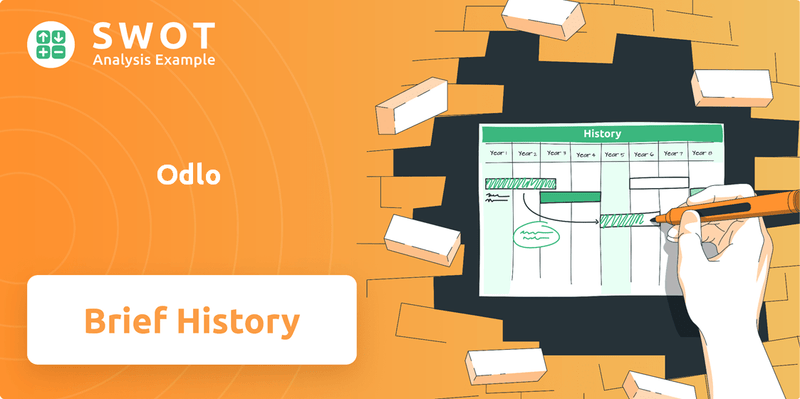
Delving into the
What is the Odlo Founding Story?
The Odlo company has a rich history, beginning in post-war Norway. The Odlo brand was established with a clear vision: to revolutionize sportswear for athletes.
The Odlo history began in 1946 with Odlo founder Odd Roar Lofterød Sr. in Oslo. Lofterød, a dedicated athlete, saw a need for better clothing to handle harsh Nordic conditions, especially for winter sports.
The company's initial focus was on providing specialized training suits, primarily targeting the Norwegian speed skating and cross-country skiing teams. This early focus allowed for direct feedback and iterative improvements in product design.
Odd Roar Lofterød Sr. founded the company in 1946 in Oslo, Norway.
- The name 'Odlo' is an acronym derived from the founder's name, Odd Roar Lofterød.
- The initial funding came through bootstrapping, with profits reinvested into the company.
- Lofterød's background as an athlete informed the design of the first products.
- The cultural context of post-war Norway supported a company focused on outdoor and winter sports.
The company's origin story is rooted in Lofterød's personal experience as an athlete. He understood the importance of proper warmth, breathability, and comfort. This understanding became the cornerstone of Odlo sportswear design.
The early products were designed to address the shortcomings of existing clothing. The company's initial business model centered on direct sales. This approach allowed the company to build relationships with athletes and gather feedback.
The post-war era in Norway, with its emphasis on outdoor activities, provided a favorable environment for a company like Odlo. The company's early success was built on its ability to meet the needs of athletes.
Odlo SWOT Analysis
- Complete SWOT Breakdown
- Fully Customizable
- Editable in Excel & Word
- Professional Formatting
- Investor-Ready Format
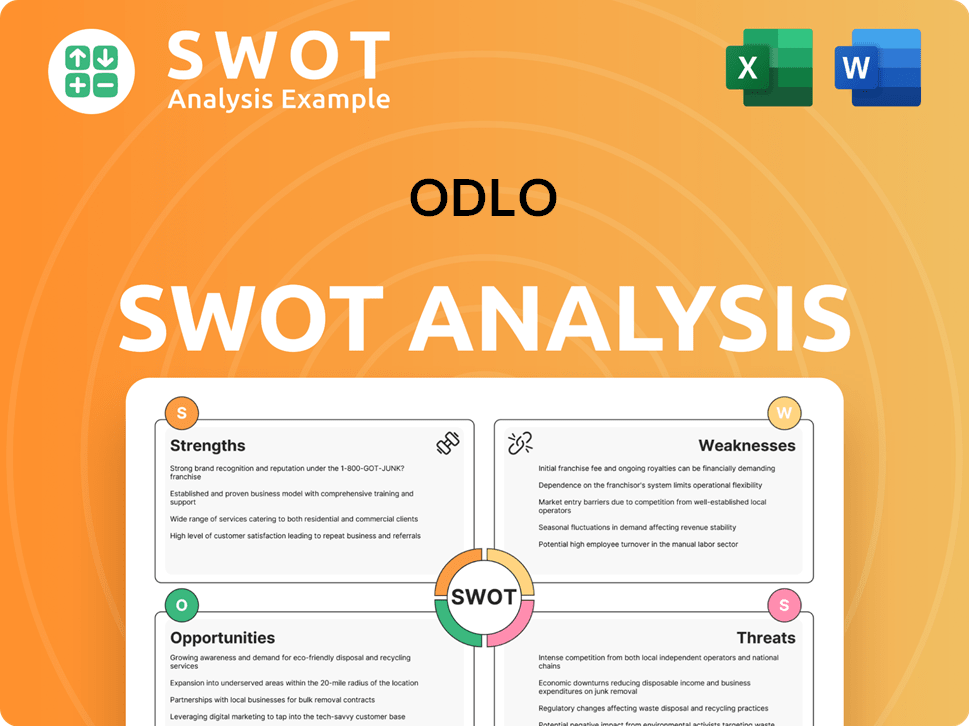
What Drove the Early Growth of Odlo?
The early growth of the Odlo company, a key part of the Odlo history, was driven by its focus on elite athletes. The Odlo brand quickly gained recognition for quality and functionality. This focus helped the company expand and establish itself in the sportswear market.
In 1947, shortly after its founding, the company began producing specialized training suits for the Norwegian national speed skating team. This early association with high-performance sports was crucial. It cemented the company's reputation for quality and innovation, setting the stage for future success in the Odlo sportswear market.
A significant advancement came in 1963 with the introduction of training suits made from Helanca fiber. This innovation provided enhanced elasticity and comfort. This development showcased the Odlo company origin story of constantly seeking to improve athletic performance through advanced materials.
The 1972 Sapporo Winter Olympics marked a turning point. Odlo supplied official sportswear for 25 national teams. This exposure significantly boosted its international profile. It facilitated expansion into new markets, particularly across Europe, increasing the demand for Odlo's products.
In 1973, the introduction of the 'three-layer principle' for functional sportswear was a game-changer. This approach emphasized moisture management and thermoregulation. This strategic shift solidified Odlo's position as a leader in technical sportswear, changing how athletes approached layering.
Odlo PESTLE Analysis
- Covers All 6 PESTLE Categories
- No Research Needed – Save Hours of Work
- Built by Experts, Trusted by Consultants
- Instant Download, Ready to Use
- 100% Editable, Fully Customizable
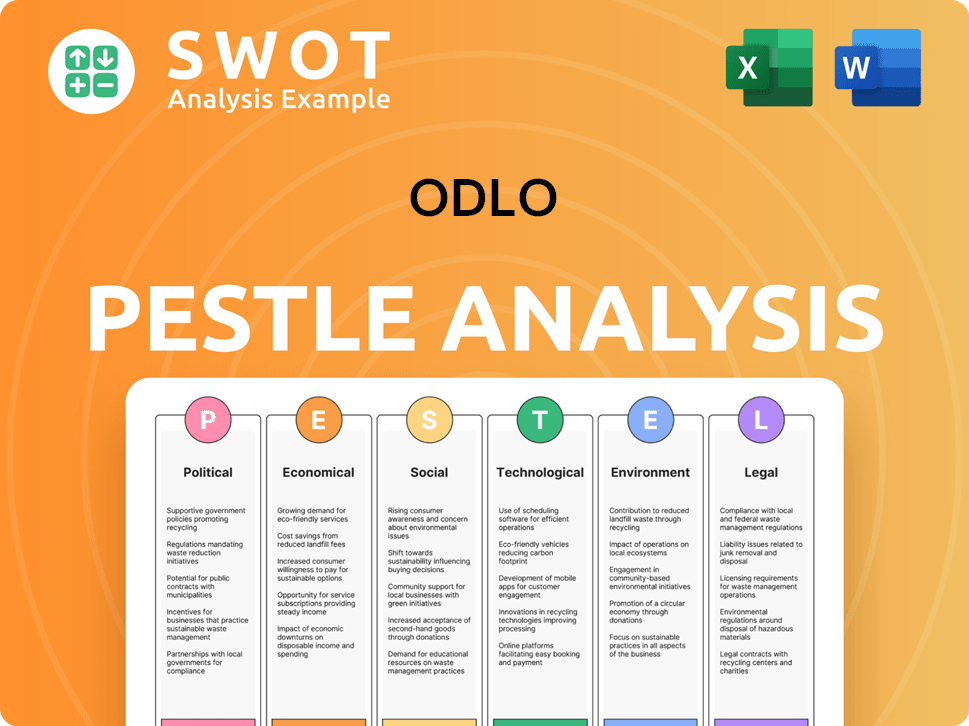
What are the key Milestones in Odlo history?
The Odlo history is marked by significant achievements and strategic shifts. The
| Year | Milestone |
|---|---|
| 1946 | The |
| 1963 | The company begins to focus on developing functional sportswear. |
| 1973 | |
| 1986 | The 'Odlo Effect' fiber is developed, incorporating silver ions to prevent odor, a groundbreaking innovation in base layers. |
| 2002 | The company launches its first seamless sports underwear, enhancing comfort and ergonomics. |
| 2023 |
The
The 'Odlo Effect' fiber, introduced in 1986, incorporated silver ions to prevent odor, significantly improving the functionality of base layers. This innovation set a new standard in sportswear hygiene and comfort.
In 2002,
The
The brand has increased its focus on sustainability. The 'Evolution Blackcomb' range, which utilizes recycled materials, is a key example of this commitment.
The company has expanded its product portfolio beyond winter sports. This includes running, cycling, and outdoor apparel, broadening its market appeal.
Collaborations with sports teams and federations have been a core part of their brand positioning. These partnerships help increase brand visibility.
The
The sportswear industry is highly competitive, with major brands vying for market share.
Consumer preferences evolve, with a growing emphasis on fashion and lifestyle.
Like many companies,
Economic downturns can impact consumer spending on non-essential items like sportswear.
Growing consumer demand for sustainable products requires continuous innovation in materials and manufacturing processes. This is a key challenge.
Expanding into new markets presents both opportunities and challenges, requiring strategic planning and investment. Adapting to local consumer needs is crucial.
Odlo Business Model Canvas
- Complete 9-Block Business Model Canvas
- Effortlessly Communicate Your Business Strategy
- Investor-Ready BMC Format
- 100% Editable and Customizable
- Clear and Structured Layout
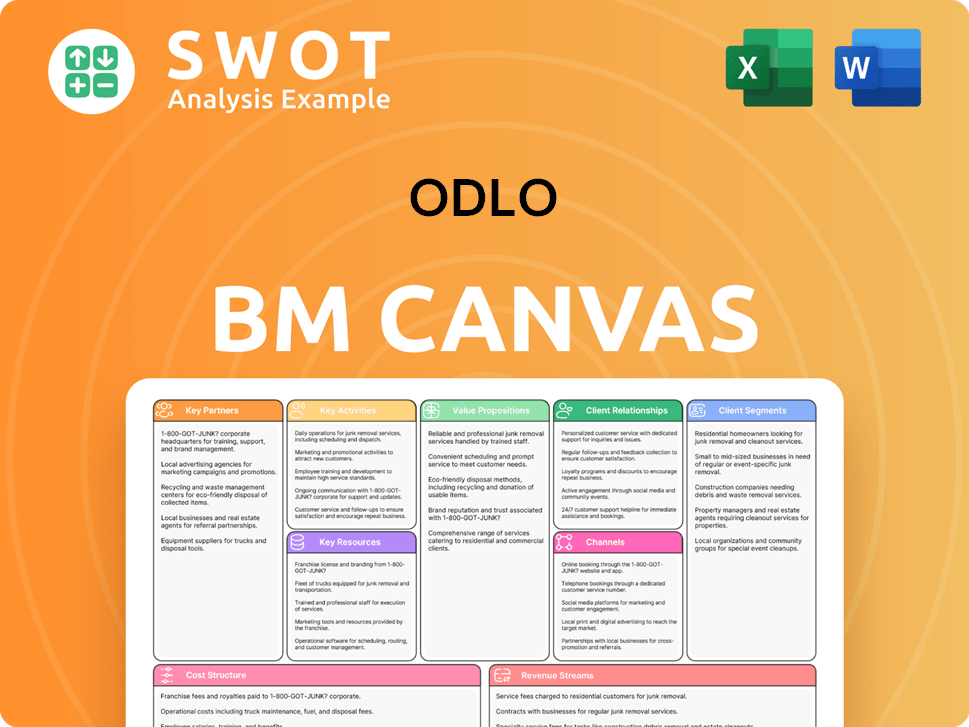
What is the Timeline of Key Events for Odlo?
The Odlo company, a pioneer in functional sportswear, has a rich history marked by innovation and a commitment to enhancing athletic performance. Founded in Oslo, Norway, by Odd Roar Lofterød Sr., the company has evolved from producing training suits for Norwegian athletes to becoming a global leader in the sportswear industry. The Odlo history is a testament to its dedication to quality, functionality, and sustainability.
| Year | Key Event |
|---|---|
| 1946 | Odd Roar Lofterød Sr. founded Odlo in Oslo, Norway. |
| 1947 | Odlo produced training suits for the Norwegian speed skating team. |
| 1963 | Introduced its first training suit made from Helanca fiber. |
| 1972 | Supplied sportswear to 25 national teams at the Sapporo Winter Olympics. |
| 1973 | Introduced the 'three-layer principle' for functional sportswear. |
| 1986 | Developed the 'Odlo Effect' fiber with silver ions for odor prevention. |
| 2002 | Launched the first seamless sports underwear. |
| 2015 | Focused on sustainability initiatives and introduced products made with recycled materials. |
| 2020s | Continues to expand its product categories, emphasizing innovative materials and sustainable production. |
| 2024 | Increased use of recycled and organic materials across its collections, aiming to reduce its environmental footprint. |
The Odlo brand is increasingly focused on sustainability. The company is investing in research and development to create advanced, environmentally conscious materials and production processes. This includes a greater emphasis on recycled and organic materials, aligning with the growing consumer demand for eco-friendly products. In 2024, Odlo continues to expand its use of recycled materials across its collections.
Odlo aims to strengthen its position in key markets while exploring new geographical opportunities, particularly in Asia and North America. The global sportswear market is expected to continue its upward trajectory, driven by increasing health consciousness and demand for functional apparel. This positions Odlo favorably for sustained expansion. The sportswear market is projected to reach $500 billion by 2025.
Leadership statements emphasize a commitment to digital transformation to enhance the online customer experience. The company is leveraging data to inform product development and marketing strategies. This approach helps Odlo better understand consumer preferences and tailor its offerings effectively. Digital sales in the sportswear industry are growing at a rate of approximately 15% annually.
The future outlook for Odlo remains closely tied to its founding vision of enhancing athletic performance through superior, functional, and increasingly sustainable sportswear. The company continues to innovate, focusing on advanced materials and technologies. The Odlo timeline reflects a consistent dedication to quality and a forward-thinking approach to the evolving needs of athletes and consumers.
Odlo Porter's Five Forces Analysis
- Covers All 5 Competitive Forces in Detail
- Structured for Consultants, Students, and Founders
- 100% Editable in Microsoft Word & Excel
- Instant Digital Download – Use Immediately
- Compatible with Mac & PC – Fully Unlocked
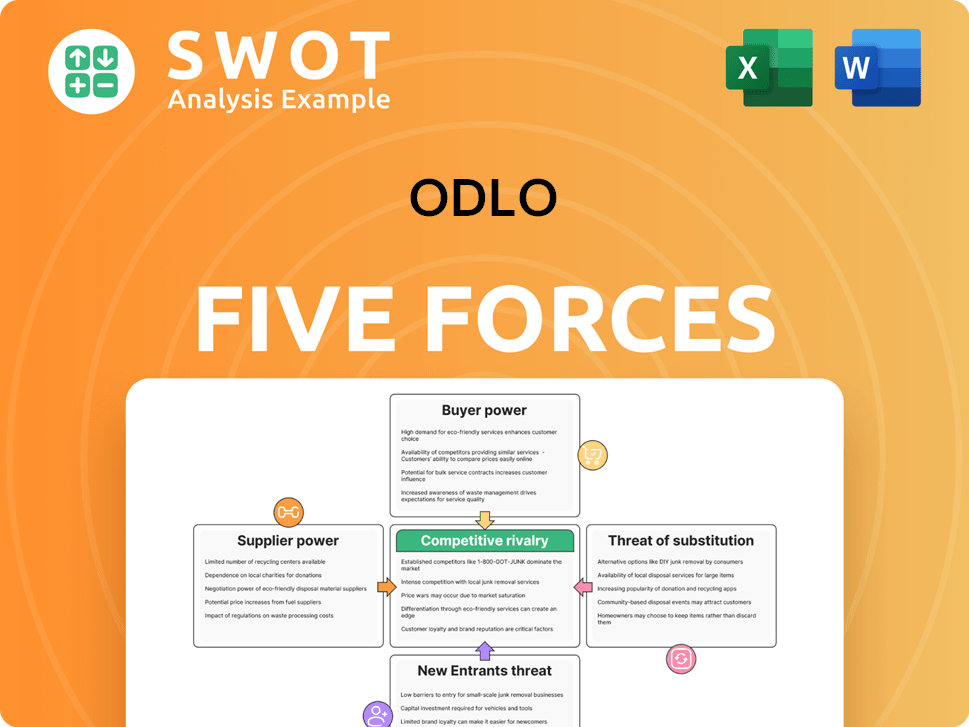
Related Blogs
- What is Competitive Landscape of Odlo Company?
- What is Growth Strategy and Future Prospects of Odlo Company?
- How Does Odlo Company Work?
- What is Sales and Marketing Strategy of Odlo Company?
- What is Brief History of Odlo Company?
- Who Owns Odlo Company?
- What is Customer Demographics and Target Market of Odlo Company?
Disclaimer
All information, articles, and product details provided on this website are for general informational and educational purposes only. We do not claim any ownership over, nor do we intend to infringe upon, any trademarks, copyrights, logos, brand names, or other intellectual property mentioned or depicted on this site. Such intellectual property remains the property of its respective owners, and any references here are made solely for identification or informational purposes, without implying any affiliation, endorsement, or partnership.
We make no representations or warranties, express or implied, regarding the accuracy, completeness, or suitability of any content or products presented. Nothing on this website should be construed as legal, tax, investment, financial, medical, or other professional advice. In addition, no part of this site—including articles or product references—constitutes a solicitation, recommendation, endorsement, advertisement, or offer to buy or sell any securities, franchises, or other financial instruments, particularly in jurisdictions where such activity would be unlawful.
All content is of a general nature and may not address the specific circumstances of any individual or entity. It is not a substitute for professional advice or services. Any actions you take based on the information provided here are strictly at your own risk. You accept full responsibility for any decisions or outcomes arising from your use of this website and agree to release us from any liability in connection with your use of, or reliance upon, the content or products found herein.